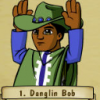I should mention, the main reason I want the map to be static is because I want some sort of storyline/environment in the game, where there are different cities fighting each other and the player has the freedom to choose which cities they want to help and which cities they want to destroy, and quests will adjust according to the choices that the player has made.
My fear is that having randomly generated cities might look bad, and will break immersion.
You can mix procedural and fixed content top down or bottom up; in your case, probably both. Content should be procedural by default, with specific things you need for plot or game balance reasons imposed as an exception.
Top down, you can simply constrain procedural generation: if you can ask for a city around a certain latitude and longitude and containing a certain list or number of buildings, NPCs and other features, your cities will be different every time but sufficiently "the same" to serve the purpose of a standard storyline.
Bottom up, you can integrate something fixed and detailed in the middle of procedural content. For example, a capital can be specified to contain not only, say, 3+3d4 swordsmiths and 4+1d8 luxury inns, but also a royal family of 20 members with names, stats and important possessions specified beforehand.
Both techniques are used all the time in RL games. At the highest level, the two common level structures are a major top-down constraint: both the sparsely connected graphs of small linked dungeon and outdoor locations and the combination of interesting places and vast and boring large-scale outdoor maps containing them determine the plot of the player character's exploration.
Some games have fairly fine-grained bottom-up "islands" of fixed content: Angband has vaults, predefined dungeon sections (with variable treasure and monsters) that can replace plain random rooms, while NetHack has, for example, a suite of levels consisting of Sokoban puzzles (exactly specified and picked randomly from a list of alternatives).






